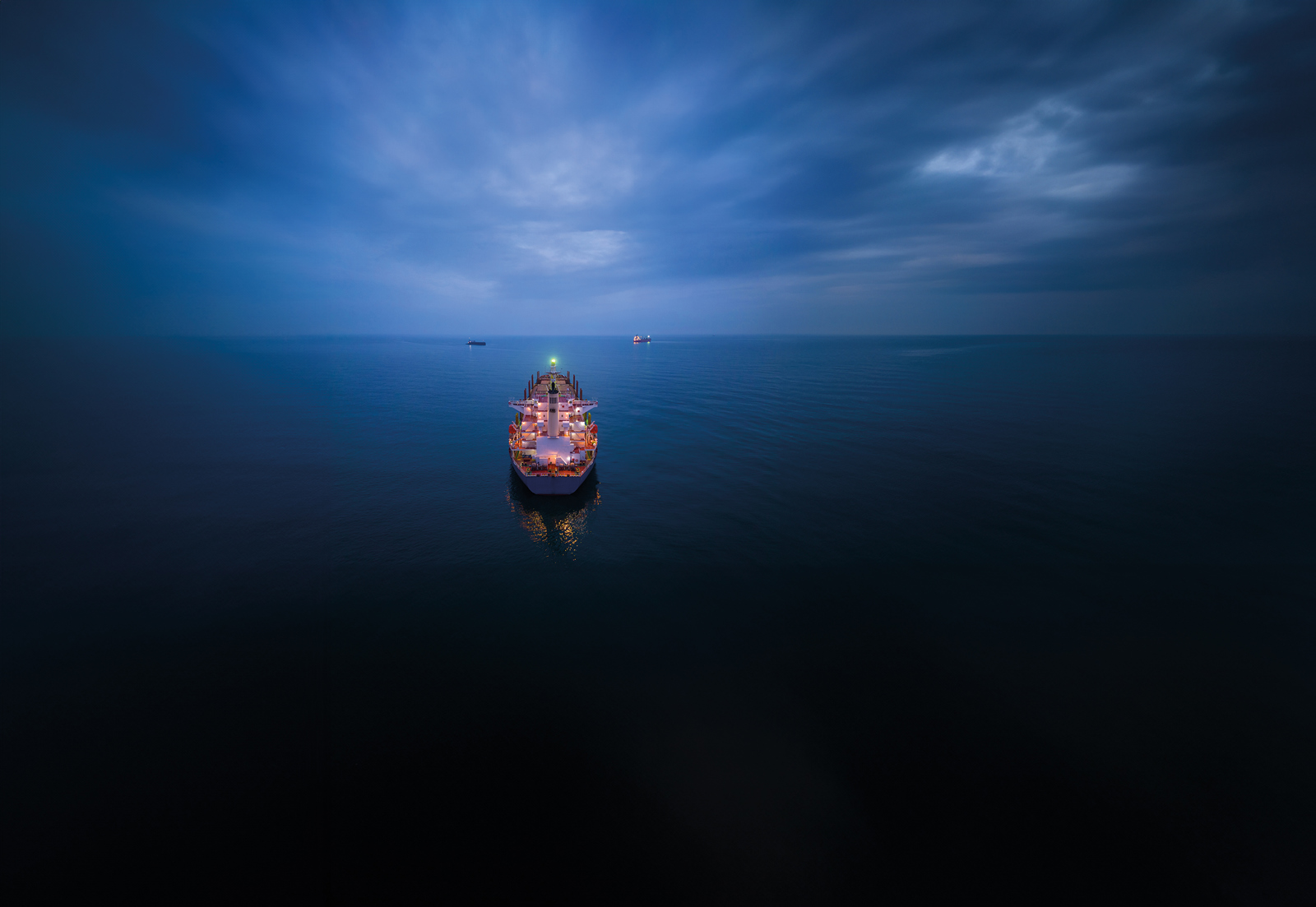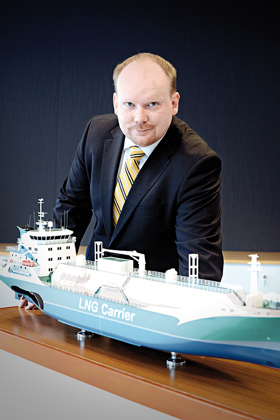
Oskar Levander, Kongsberg Maritime’s Vice President Strategy & Business Development, on the challenges and considerations facing ship owners dealing with ambitious environmental targets.
-
Text:Global Sales and Marketing
Photo:©Kongsberg Maritime | ©Shutterstock | ©Sandsun
-
Craig TaylorSenior Manager PR & Communications
The International Maritime Organization (IMO) introduced new measures to reduce shipping emissions and carbon intensity in January 2023. The Energy Efficiency Existing Ship Index (EEXI) and the Carbon Intensity Indicator (CII) form part of short-term ambitions for carbon emissions reductions by 2050.

Oskar Levander, Kongsberg Maritime’s Vice President Strategy & Business DevelopmentI’ve been working in this area for many years and my role is to look at what the market will need, and what we as a business can do to support our customers and to grow in the industry.
The challenges don’t come from operating with net zero emissions. Once fuel production and ships are in place and everyone is dealing with equal demands and regulations, the world can afford zero emission shipping. It’s the process of getting there that’s difficult.
How do we ensure that fair competition remains? Who should be investing in new infrastructure? How do we transition from existing operations? The uncertainties are not helped by lack of clarity on what future regulations might be. We know targets and ambitions, but not necessarily the mechanisms that will get us there.
Navigating change
Our job is to help customers understand and adapt to the changes we know about, and to anticipate and prepare for those we don’t. At present, the IMO target is an ambition. However, it will eventually bring in regulations with clear implications for ship owners.
Here’s what we know: there are likely to be new technical and economic operational measures impacting ship owners. What those measures will be is still being debated.
It’s most likely that technical measures will be around carbon intensity, ensuring that fuels contain less carbon. Economic measures might involve a carbon tax, or perhaps buying rights for emissions.
All of which affects our customers. While we are primarily in the business of selling, we must also ensure that we have the right knowledge and understanding to advise our customers on reducing emissions.
The triangle
When we talk about reducing emissions, I think of a triangle.
One corner represents reduced energy consumption. The second is about selecting a clean energy source, the third is about energy efficiency.
How do we help customers to consume less energy? It’s about things that reduce their energy demand. That might be optimising their routes, thinking about shipping dates, vessel speeds and so on. They don’t want to get to a port quickly just to end up waiting outside.
And that’s where we play an essential part – consulting with customers and providing them with the tools that help them optimise their operation.
The second corner of the triangle is about selecting the right clean energy source. That might be alternative fuels, but it could also be wind power, wave power or shore power, where you charge your ship at shore and run on batteries.
We already provide solutions for some of these, but we also help our customers to find the right energy source for their needs.
Finally, you need to convert that clean energy into the most efficient power type for your vessel, which comes down to selecting the right machinery.
The big challenge is getting all of this together. And that is the strength of a company like ours. We have the full picture for all the customers’ operations, so we’re well placed to advise them. We have the ship design, we have our own- and third-party equipment, we have integrated solutions, and we know how to put everything together. You need that holistic view to really truly optimise.
Today’s challenges
The regulations that came into place in January 2023 have had a clear impact. EEXI meant owners looked for one-off solutions to ensure short-term compliance.
CII, on the other hand, is the main regulation driving emissions reduction, and has ongoing implications for our customers. Simply put, CII uses calculations based on emissions, cargo capacity and distance to create an energy index from A to E. For owners, it’s not just about using less fuel. They must also be able to document operations accurately and predict and plan the amount of energy they’ll need.
We can provide tools to calculate energy use and monitor fleets. We are continuously improving those tools, while also supporting our customers by helping them upgrade and realise the value of their existing fleets.
The cost of non-compliance
A CII rating of D or E means a potential ban on operating. Ships with an E rating cannot operate until improvements are made, those rated D have up to two years to make improvements.
On top of that, certain charterers don’t want bad ratings, because that impacts their own environmental targets. A good CII rating increases earning potential, a bad one reduces it.
Compliance also impacts finance. If shipowners want to achieve funding to build a new ship, the build has to be green. Which means certain types of vessels currently being built will be capable of running with alternative fuels. They may not use those fuels from day one, but they have the capability.
Non-compliance, in a nutshell, could mean no finance to build, fewer or less profitable charters and no operations. Those are heavy costs.
What lies ahead?
The next big change is likely to be the IMO’s planned economical measure. It will be adopted in 2025, brought into force in 2027 and will most likely involve a price on greenhouse gas emissions.
“It’s an effective way to drive decarbonisation. You don’t dictate what technologies to use”
For example, quick wins could be smartly integrated wind propulsion and new air lubrication solutions. These are just two of the untapped technologies that can really move the needle when it comes to efficiency. Kongsberg Maritime, as an integrator, can pull together different technologies and recommend an efficient solution matched to owners’ requirements.
We’re also developing fleet management solutions, which are getting smarter all the time, and making use of artificial intelligence (AI) and machine learning to help optimise ship operation. There’s so much data to consider that it’s impossible to decide on the best way to run a vessel just by thinking about it. We use these tools to consider all the variables and help us reach the right decisions.
Whatever route customers take in the future, they need to work on minimising consumption and maximising efficiency. That will not only help achieve compliance in the near future, it will also mitigate the higher cost of low carbon fuels.
It’s a strategy that will pay off, whatever happens in the future.


